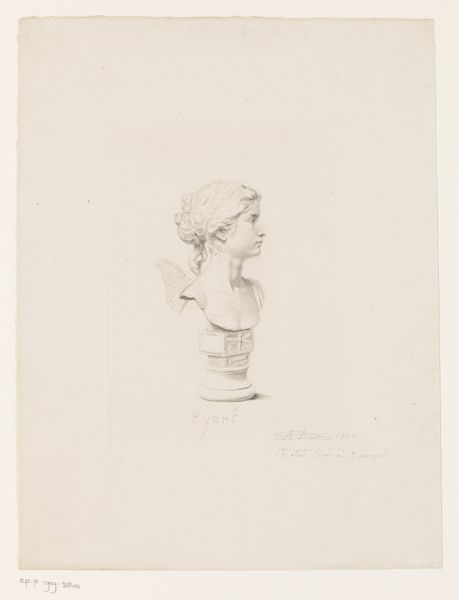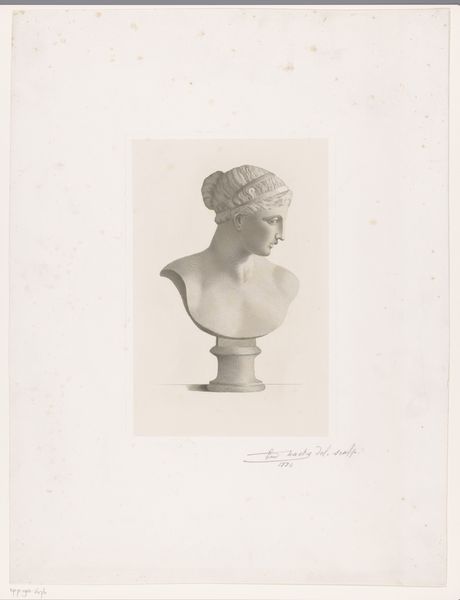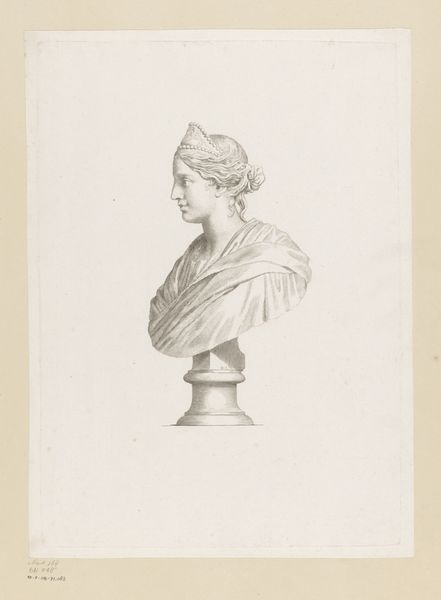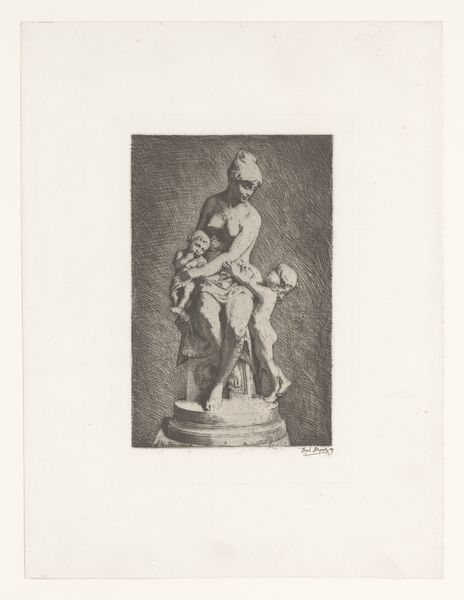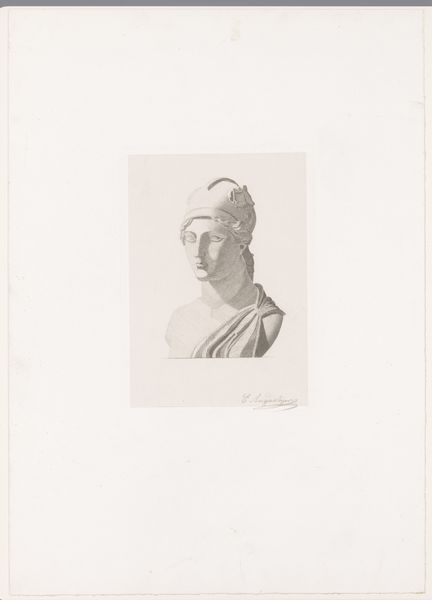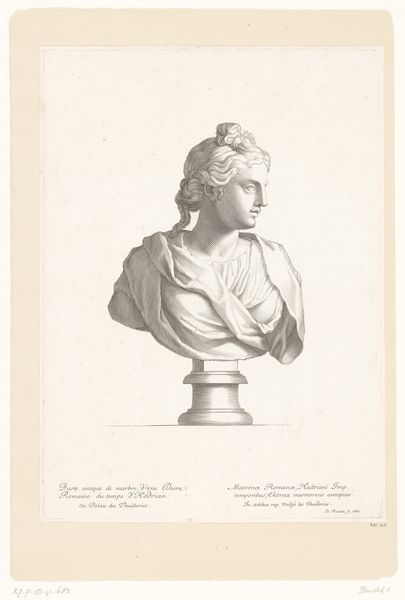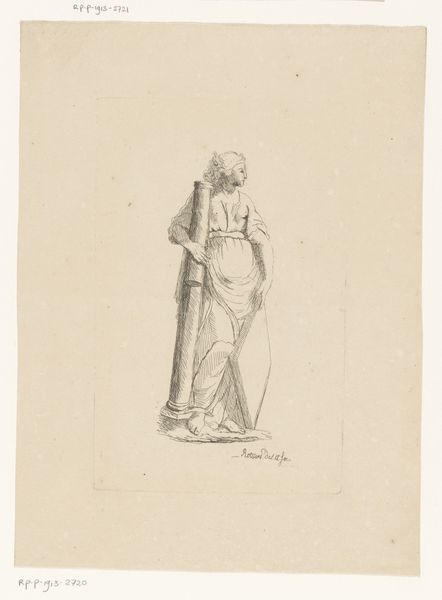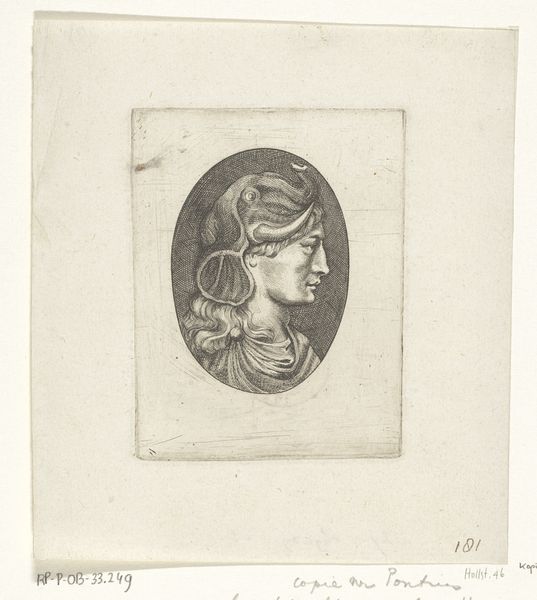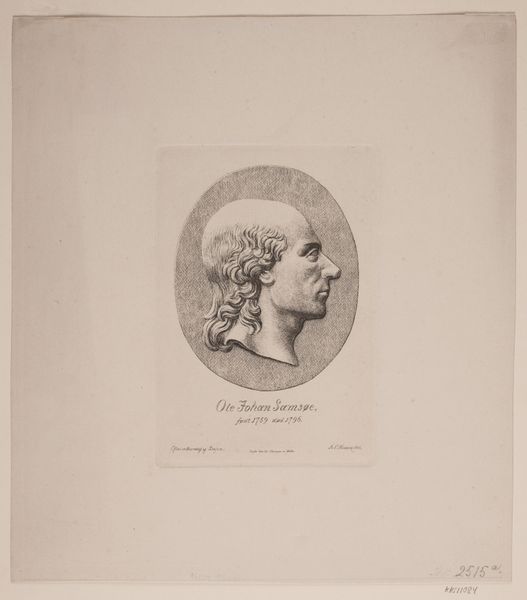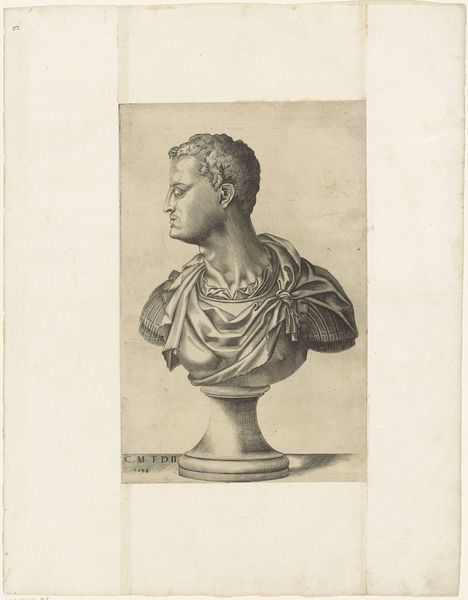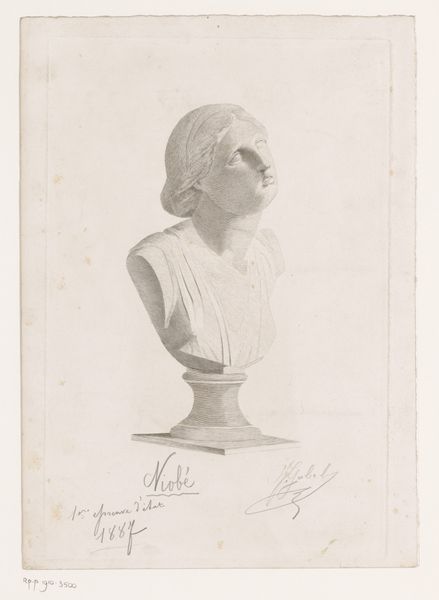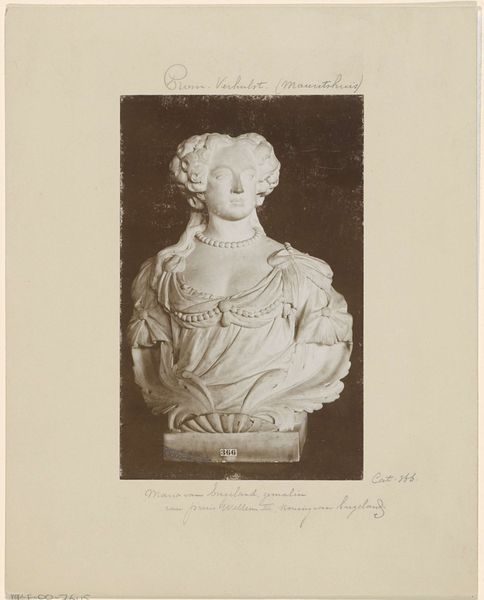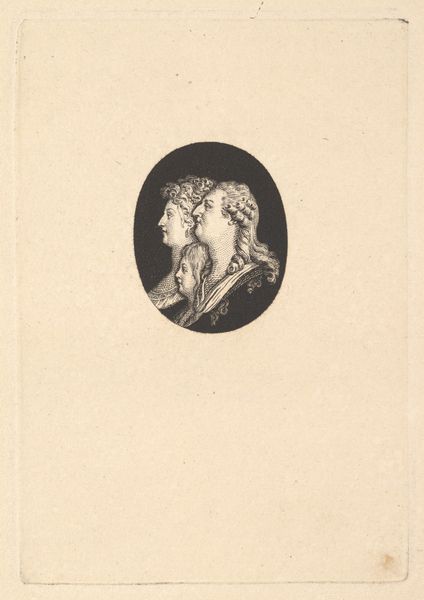
drawing, print, paper, sculpture, engraving
#
portrait
#
drawing
#
neoclassicism
# print
#
classical-realism
#
paper
#
sculpture
#
engraving
Dimensions: height 193 mm, width 138 mm
Copyright: Rijks Museum: Open Domain
Curator: This print, "Buste van Psyche," was created around 1880 by Auguste Danse and resides here at the Rijksmuseum. It's an engraving that depicts a Neoclassical sculpture of Psyche. Editor: Isn't it lovely? There's a subdued elegance here, the shading gives a softness that counters the starkness of the stone, almost making her feel alive, caught between the mortal and the ethereal. Curator: The late 19th century witnessed a surge in reproductive prints like this. They played a crucial role in disseminating art and classical ideals to a wider audience. Photographic reproduction was improving, but the skill of a trained artist was still valued. Editor: I see that. The crisp lines definitely hint at classical ideals—that idealized form, that serene profile. There’s also something fragile about it. She has these tiny wings... Is she about to fly or has she just landed? Curator: Well, in Greek mythology, Psyche embodies the soul, often represented with butterfly wings, which we see here, signifying her metamorphosis and the soul's journey. The sculpture itself would have been symbolic of the Victorian era’s fascination with love, soul, and beauty. Editor: Right, I love that symbolism. It makes me wonder what inner transformation Danse experienced in rendering the original sculpture through print. Was this just a way to mimic perfection, or were they searching for it through art? Curator: It's fascinating how printmaking enabled these classical sculptures, usually the province of the elite, to enter more domestic settings and public consciousness. It really democratized access to high art. Editor: Absolutely. This artwork really reminds me of those timeless discussions surrounding beauty, accessibility, and, of course, the transformative journey we all take as humans, searching for meaning. Curator: Exactly, and thinking about Danse and his choice of medium offers interesting perspective on the distribution and valuation of art in the late 19th Century. Editor: This has certainly shifted my gaze to look a little differently at this print, appreciating not only the beauty it represents, but the historical echoes it carries.
Comments
No comments
Be the first to comment and join the conversation on the ultimate creative platform.
